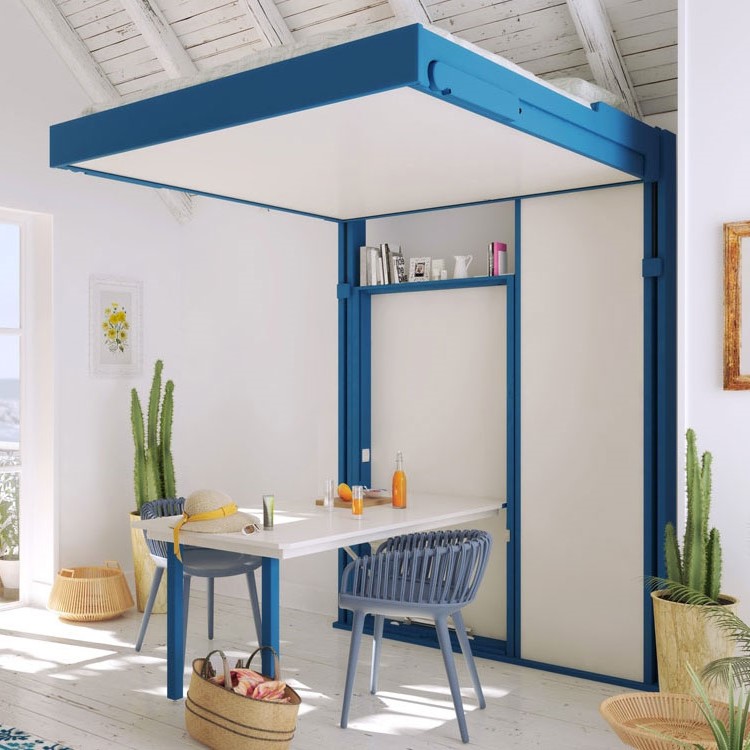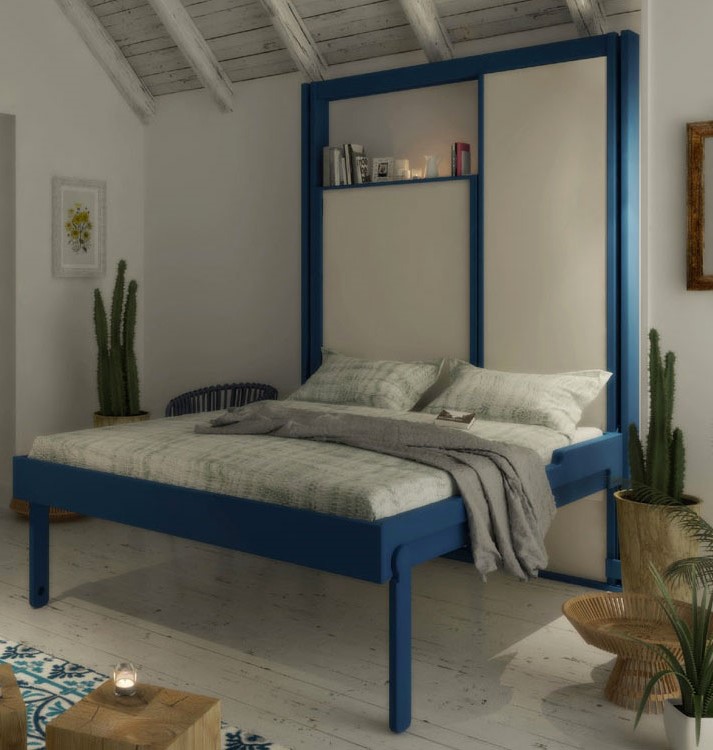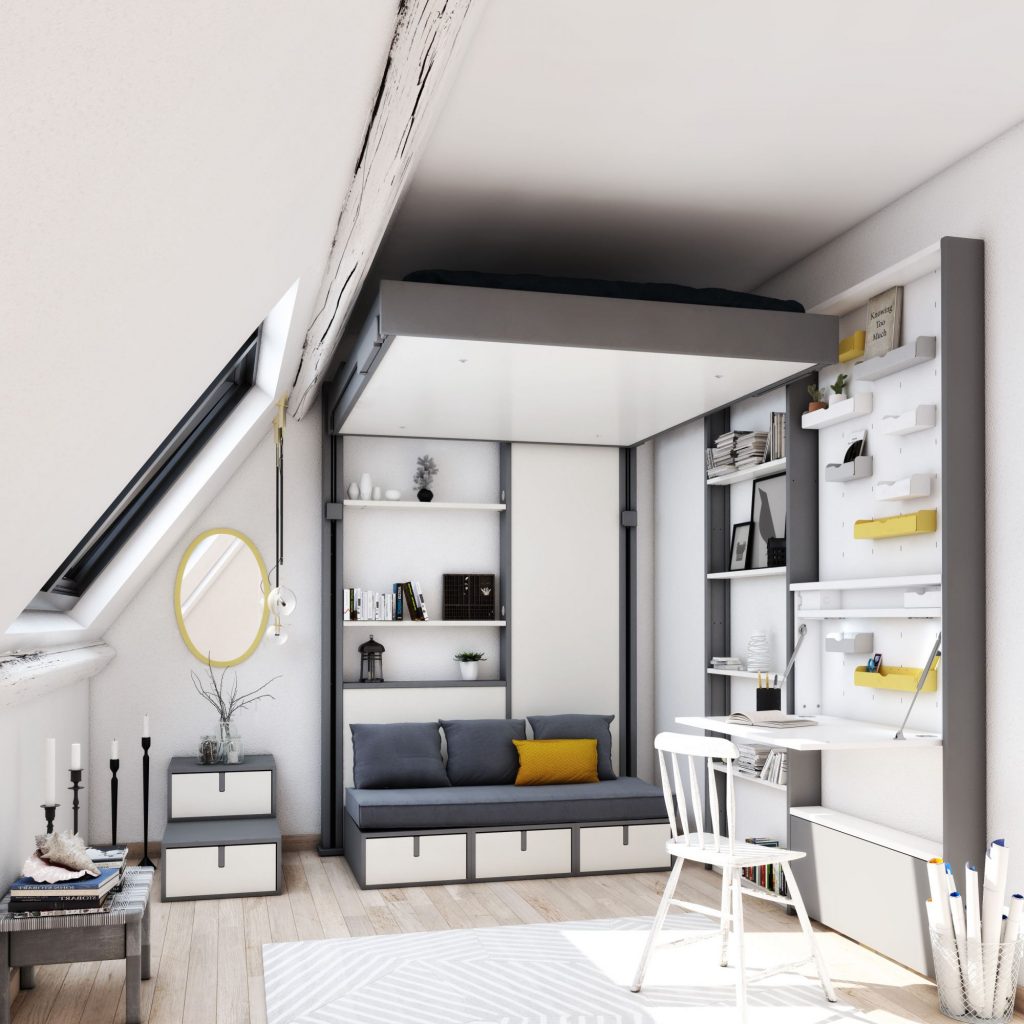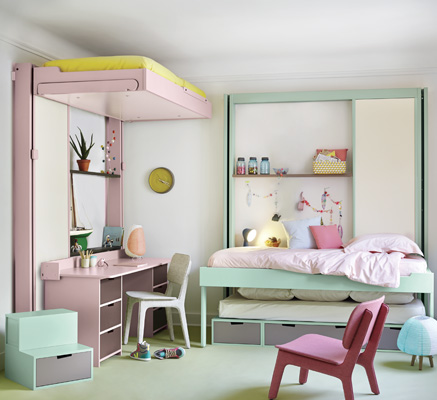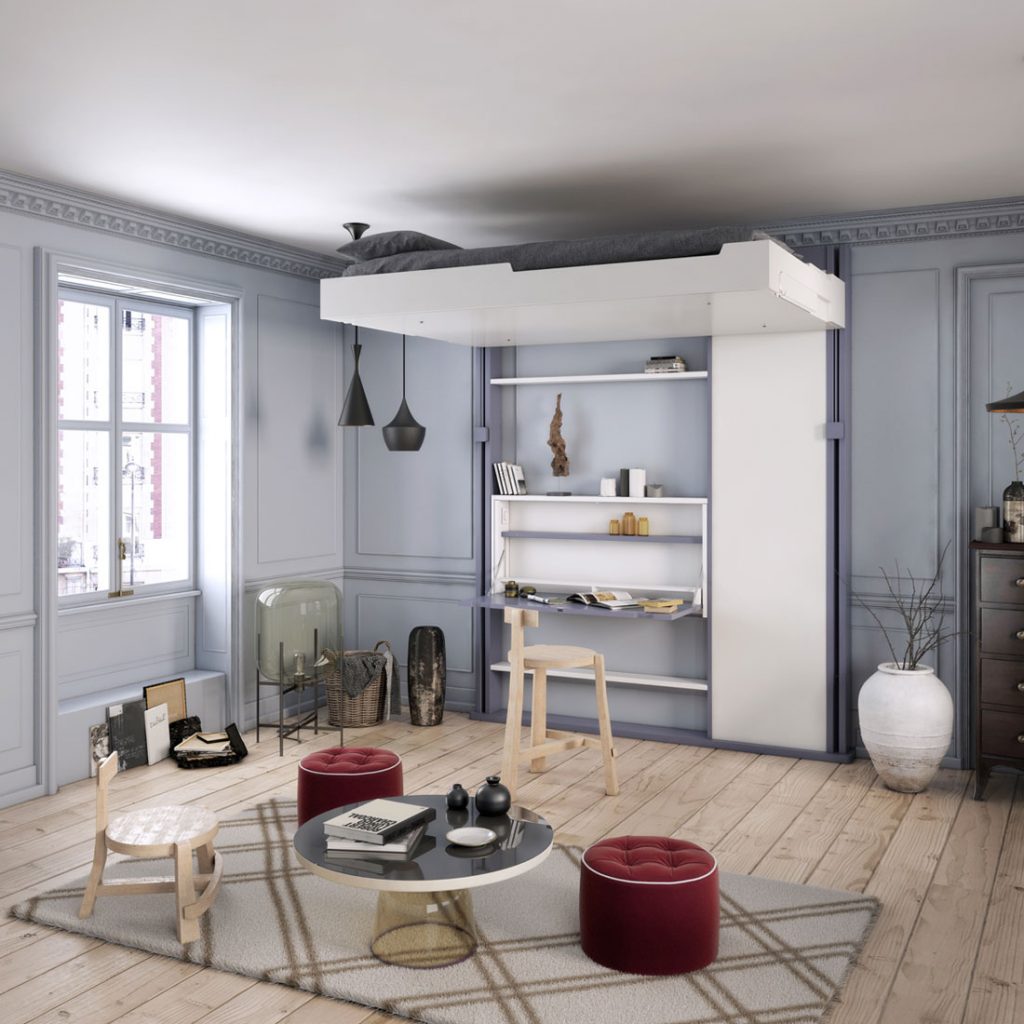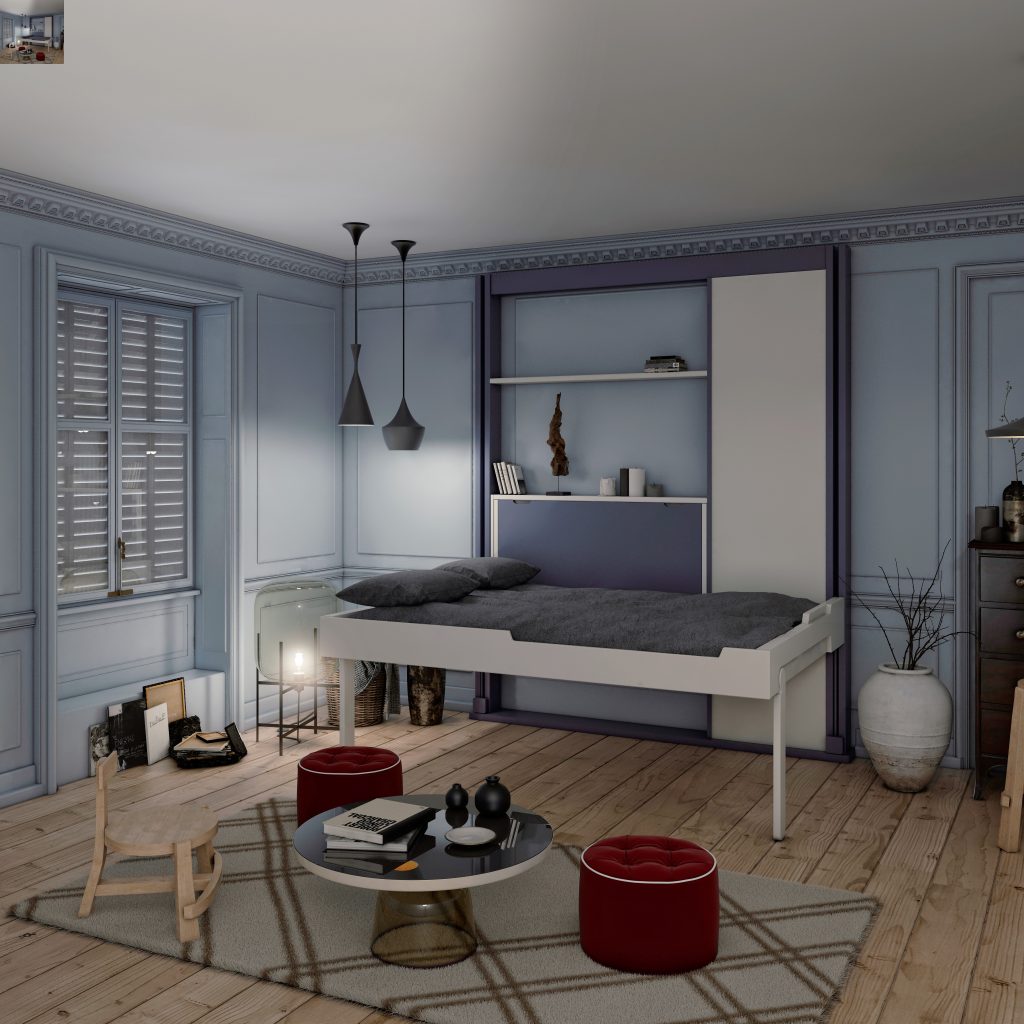The space-saving solution of choice for city dwellers, the retractable bed offers numerous opportunities for optimizing the space in a home.
The slide-aways bed
Invented by Géo Trouvetou or Lépine contest inventors, the retractable bed appeared in the early 20th century in the United States under the nickname “Murphy bed” or “hideaway bed”.
Mechanisms quickly improved, and the object found its place in modern apartments. So much so, in fact, that it became a film set element, and a famous source of comic situations. But it was first known as a bed that could be stored in a wardrobe.
In this configuration, space savings are certainly less advantageous than ceiling-mounted beds, which don’t take up the space of a storage unit or floor space.
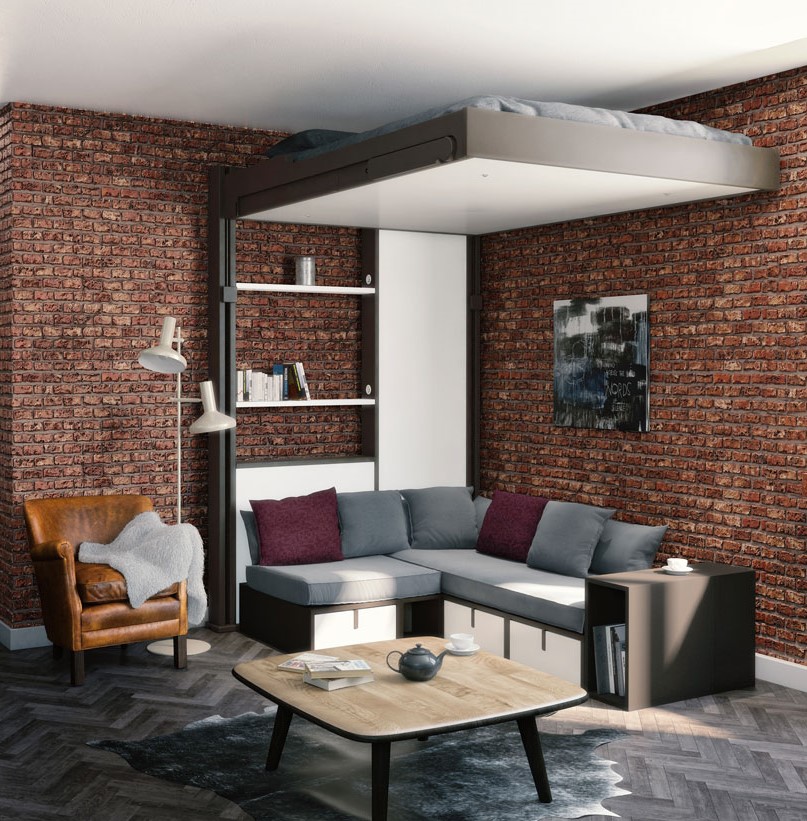
The new generation of retractable beds
Retractable beds are back in fashion. Where retractable bed mechanisms in wardrobes used to be a laughing matter, now there’s furniture that merges practicality and harmony of form in a “design” approach.
It’s against this backdrop that new bed shapes have emerged, taking into account the desires of users. Traditional wardrobe beds are more reliable; sofa beds have become commonplace; and ceiling-mounted beds no longer require so much effort to store.
The arrival of new techniques also makes it possible to enhance these beds, and improve the layout of your interior: electric motor to tidy up the bed, LED lights under the bed to create a ceiling light, etc.
An example: the ceiling-mounted bed
Espace Loggia has worked with renowned designers to create its retractable ceiling bed, available in several design models: Dklé, Tryptich, Eclectique.
Floor-mounted, it’s a comfortable, elegant bed; ceiling-mounted, it blends seamlessly into the ceiling to reveal nothing of the furniture. Very slim, it “eats up” virtually no space when stored.
So you can have two spaces in a single room: a sitting area or a work area, with a bed.
